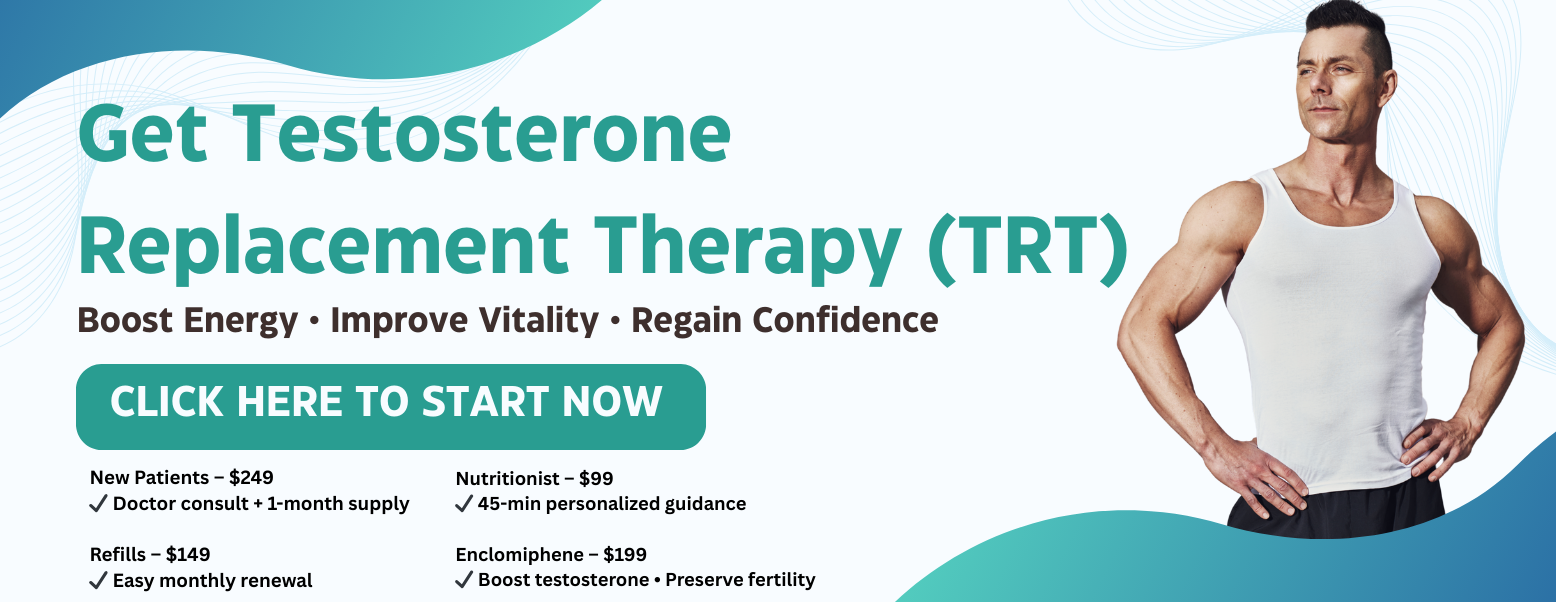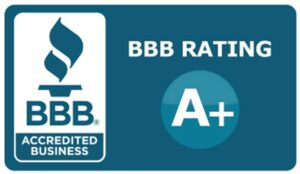Testosterone Replacement Therapy (TRT) is no longer a one-size-fits-all solution In 2025, several customized treatment methods are now available to men depending on their lifestyle, health and preferences. Chronic fatigue, low sexual desire, mental fuzziness or even muscular atrophy may be improved by TRT.
Don’t Wait, Reclaim Your Vitality – Click here to Book Your TRT Consultation Now!
Still, because there are many types of treatments—like injections, gels, patches, and pellets—knowing their differences is important. This guide looks at the top TRT treatments available in 2025, discussing the pros and cons and who can benefit from each method.
What Is TRT and Why Is It Used?
Testosterone Replacement Therapy (TRT) is prescribed for men who have low testosterone (low T), as this condition can upset their health and moods. People with low T often have these symptoms:
- Low energy and chronic fatigue
- Decreased sex drive and erectile dysfunction
- Mood swings and irritability
- Increased body fat and reduced muscle mass
- Difficulty concentrating
What Causes Low Testosterone?
Low T (hypogonadism) can be caused by:
- Aging (most common in men over 30)
- Chronic illnesses (diabetes, obesity, sleep apnea)
- Injuries or infections affecting testicles
- Medications (e.g., opioids or chemotherapy)
- Genetic disorders
Common Symptoms of Low Testosterone
- Fatigue and low motivation
- Weight gain and muscle loss
- Mood swings and depression
- Brain fog and memory issues
- Low libido or erectile dysfunction
Promising TRT Treatment for Men in 2025
TRT is now designed specifically for each patient with better telemedicine, safer hormones and monitoring. The following treatments are highly effective TRT options for men in 2025:
1. Testosterone Injections
Still the Gold Standard for Potency and Results
Testosterone injections are among the most widely used TRT methods. They are supposed to be injected into the muscle or under the skin and give lots of testosterone that works for days or even weeks.
Pros
- Fast-acting and effective
- Long-lasting results (weekly or biweekly dosing)
- Lower long-term cost
- Easy to track dosage levels
Cons
- Invasive (needle required)
- May cause fluctuating hormone levels if not dosed properly
- Requires proper training or clinic visits
Best For:
People who prefer strong, lasting effects and either feel comfortable injecting themselves or going to regular appointments at a clinic.
2. Testosterone Gels and Creams
Convenience Meets Discretion
Gels and creams are applied directly to the skin (shoulders, arms, or thighs) and absorb through the skin into the bloodstream.
Pros
- Non-invasive and easy to apply
- Steady hormone release
- Ideal for those with needle aversion
Cons
- Risk of transference to others
- Daily application required
- May cause skin irritation
- Less precise dosage control
Best For:
Those who want to avoid surgery and are willing to apply products each day and be careful before applying them.
3. Testosterone Patches
A Steady Flow, Painlessly Delivered
They are applied to the skin (usually the back or upper arm) and over 24 hours they slowly release testosterone.
Pros
- Steady hormone delivery
- No injections required
- Discreet and simple to use
Cons
- Skin irritation is common
- May not stick properly with sweat or heat
- Less effective in some individuals
Best For:
Those with low but still enough testosterone who choose a daily method and may find gels and injections bothersome.
4. Testosterone Pellets (Implants)
Set It and Forget It—With Long-Term Coverage
The injectables are placed in tiny pellets under the skin (usually in the patient’s buttocks) and the procedure is done at an outpatient clinic. They will slowly start releasing testosterone over a period of 3–6 months.
Pros
- Very low maintenance
- Long-lasting treatment
- Stable testosterone levels over time
Cons
- Surgical insertion required
- Cannot adjust dosage after insertion
- Risk of infection or pellet extrusion
Best For:
Busy men who prefer long-term solutions with minimal intervention and are comfortable with a minor surgical procedure.
5. Oral Testosterone (Undecanoate Capsules)
A New-Gen Option in 2025
Oral testosterone is now FDA-approved in certain forms, this alternative gives men a choice who do not like to use injectable or topical types of testosterone.
Pros
- Easy to take
- No skin irritation or needles
- Convenient dosing
Cons
- Requires multiple doses daily
- Absorption affected by food intake
- Liver impact possible, though newer formulations are safer
Best For:
Those who want treatments that are simple, gentle and their doses can be controlled easily.
6. Nasal Testosterone Gel
Fast, Targeted, and Unique
This intranasal gel is applied inside the nose 2–3 times a day using a special applicator.
Pros
- Rapid absorption
- Avoids skin and injection issues
- Discreet and simple
Cons
- Requires multiple daily doses
- May irritate nasal passages
- Lower testosterone levels than injections
Best For:
Men who want non-invasive options and don't mind frequent applications.
Comparing TRT Options Side by Side
| Treatment Type | Dosing Frequency | Invasiveness | Stability of Hormones | Cost Efficiency | Customizability |
| Injections | Weekly/Biweekly | High | Moderate to High | High | High |
| Gels/Creams | Daily | Low | Moderate | Moderate | Moderate |
| Patches | Daily | Low | Moderate | Low | Low |
| Pellets | Every 3–6 Months | Moderate | High | High | Low |
| Oral Capsules | Daily (2–3 times) | Low | Moderate | Moderate | Moderate |
| Nasal Gel | Daily (2–3 times) | Low | Low to Moderate | Low | Low |
What’s New in TRT Options in 2025?
1. Telemedicine + TRT Subscription Models
The biggest change in 2025 will be the increase of telemedicine-based TRT care. Taking hormone therapy is now as easy as subscribing each month for consultations, medications, and at-home delivery, with doctors still supervising everything.
2. Personalized Hormone Protocols
AI-powered technology allows clinics to make hormone treatment plans that fit each patient’s genes, activities and reported symptoms. Now, you don’t have to experiment so much—optimization can be done more sensibly and quickly.
3. Advanced Monitoring Tools
Now, with wearables and mobile apps, your symptoms, mood and energy levels can be tracked, which makes it easier for providers to adjust your TRT plan at any time. TheKIF includes comprehensive care in everything from their care packages.
Choosing the Best TRT Option for You
TRT therapy selection should be based on different things such as:
- Your lifestyle (daily vs. long-acting solutions)
- Comfort level (with needles, surgery, or medication)
- Medical history (liver health, fertility needs, etc.)
- Cost and access to care
- Support system (ongoing follow-ups and labs.
Talking to a specialist is key. Clinics offer reliable hormone health support, which makes it possible to access it from anywhere with no stress and professional advice.
What’s New in TRT Care in 2025?
1. Subscription-Based TRT Models
Clinics now offer monthly TRT subscriptions that include:
- Telemedicine consults
- Monthly TRT refills
- Ongoing expert care and follow-up labs
- Fast, discreet delivery to your home
2. At-Home Hormone Testing Kits
Patients can now test their hormone levels at home and still rely on accurate results.
3. AI-Driven Personalization
Now, AI-powered programs are used to tailor TRT programs according to lab results, symptoms and lifestyle.
Conclusion
With an abundance of TRT options available in 2025, finding the right treatment comes down to personalization, convenience, and expert guidance. Choosing between injections, topical creams, or modern telehealth solutions is your first step toward improved energy, strength, and clarity.
At TheKIF.com, we’re leading the charge in modern men’s health by offering:
- Free Consultation – $0: Consult a hormone health expert free at the beginning.
- New Patient TRT Plan – $249: A complete package to get you started—includes a full month of TRT and a telemedicine consult.
- Monthly Refills – $149: Stay healthy with your prescriptions being delivered and additional doctor consultations.
- Monthly TRT Subscription: Our complete package makes everything about TRT easier for you. A telemedicine visit and a month of therapy can be repeated.
Take control of your health, energy, and confidence today. Book your free consultation now at TheKIF.com.
FAQs
1. Which TRT option works fastest?
A lot of the time, testosterone injections improve mood, libido and energy within 2–4 weeks. But the full benefits usually take between 2 and 3 months to appear.
2. Are there side effects with all TRT options?
Any type of TRT can cause acne, cause mood swings, raise the number of red blood cells or affect the levels of estrogen in the body. Regular monitoring with the help of a delivery service (such as TheKIF.com) reduces these dangers.
3. Can I switch between TRT types?
Absolutely. Most men experiment with several approaches before they find something that suits them. TheKIF give you support and the ability to adjust your strategy safely.
4. Is TRT covered by insurance in 2025?
It is up to your provider and the plan you choose. Normally, TRT medicine and basic lab tests are covered, but some treatments, like personalized subscriptions or bioidentical therapy, need to be paid for. The prices given by KIF do not include hidden charges.
5. What’s the most low-maintenance TRT option?
Pellets are the easiest to care for, and a single procedure with them lasts for 3–6 months. But they are not flexible and are hard to adjust. If you want convenience and flexibility, you can use the clinic's monthly TRT subscription— your treatment is delivered, monitored, and consult-backed each month.
 Since 2021, Kif offers a streamlined platform to get a medical marijuana card online. We have served more than 45K patients across the United States. Sign Up Now to get the right to use medical cannabis for your health condition without any delay.
Since 2021, Kif offers a streamlined platform to get a medical marijuana card online. We have served more than 45K patients across the United States. Sign Up Now to get the right to use medical cannabis for your health condition without any delay.
























